Spiders belonging to prominent families like orb-weaver, cobweb., and wolf are known to inhabit the state of Delaware. Since it is located near the ocean, water-dwelling species like the fishing spider is known to thrive here. The state has two potentially dangerous spiders namely the brown recluse and black widow.
| Species of the Wolf (Lycosidae) | Orb-weaver (Araneidae) family | — |
| Species of the Wolf (Lycosidae) | Fishing (Dolomedes) family | — |
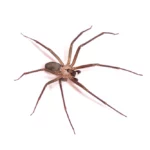 Brown Recluse Spider (Loxosceles reclusa) - The brown recluse spider is a special spider found mostly in the central and southern parts of the U.S. It's part of a small group of spiders in North America known for having strong venom, along with the Chilean recluse and black widow.… Continue Reading >
Brown Recluse Spider (Loxosceles reclusa) - The brown recluse spider is a special spider found mostly in the central and southern parts of the U.S. It's part of a small group of spiders in North America known for having strong venom, along with the Chilean recluse and black widow.… Continue Reading >
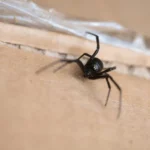 Western Black Widow (Latrodectus hesperus) - Have you ever heard about the Western Black Widow spider? It's a special spider found mostly in the western areas of North America. They are closely related to the northern black widow.… Continue Reading >
Western Black Widow (Latrodectus hesperus) - Have you ever heard about the Western Black Widow spider? It's a special spider found mostly in the western areas of North America. They are closely related to the northern black widow.… Continue Reading >
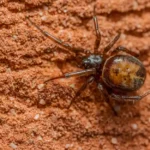 Rabbit Hutch Spider (Steatoda bipunctata) - Discover the intriguing world of the rabbit hutch spider, a comb-footed spider family member. Known for its unique habit of dwelling in places where rabbits live, this spider is more than just its name.… Continue Reading >
Rabbit Hutch Spider (Steatoda bipunctata) - Discover the intriguing world of the rabbit hutch spider, a comb-footed spider family member. Known for its unique habit of dwelling in places where rabbits live, this spider is more than just its name.… Continue Reading >
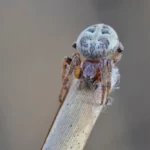 Furrow (Larinioides cornutus) - Did you know there's a spider called the Furrow spider? It belongs to the orb-weaver family. You can find them in places like North Africa, Europe, parts of Asia, and even in North and South America!… Continue Reading >
Furrow (Larinioides cornutus) - Did you know there's a spider called the Furrow spider? It belongs to the orb-weaver family. You can find them in places like North Africa, Europe, parts of Asia, and even in North and South America!… Continue Reading >
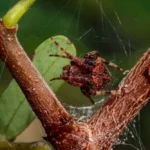 Spotted Orb Weaver (Neoscona crucifera) - The spotted orb weaver is a tiny spider that lives in places like Florida, Maine, Arizona, and Minnesota. Part of the orb weavers family, they usually roam at night.… Continue Reading >
Spotted Orb Weaver (Neoscona crucifera) - The spotted orb weaver is a tiny spider that lives in places like Florida, Maine, Arizona, and Minnesota. Part of the orb weavers family, they usually roam at night.… Continue Reading >
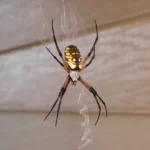 Yellow Garden (Argiope aurantia) - Imagine a spider with bright yellow and black colors, weaving an amazing web in the garden. That's the Yellow Garden Spider for you! They're super peaceful and really good at making fancy webs.… Continue Reading >
Yellow Garden (Argiope aurantia) - Imagine a spider with bright yellow and black colors, weaving an amazing web in the garden. That's the Yellow Garden Spider for you! They're super peaceful and really good at making fancy webs.… Continue Reading >
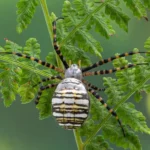 Banded Garden (Argiope trifasciata) - The banded garden spider is a common spider with two types: Argiope trifasciata deserticola and Argiope trifasciata kauaiensis. They prefer warm places and usually aren't around in cold winters because they don't like the chill.… Continue Reading >
Banded Garden (Argiope trifasciata) - The banded garden spider is a common spider with two types: Argiope trifasciata deserticola and Argiope trifasciata kauaiensis. They prefer warm places and usually aren't around in cold winters because they don't like the chill.… Continue Reading >
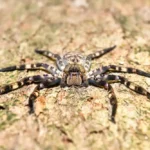 Dark Fishing (Dolomedes tenebrosus) - The Dark Fishing Spider is a special spider from the Pisauridae family. It looks a lot like the striped fishing spider. Here's something wild: after these spiders mate, the male often becomes a meal for the female!… Continue Reading >
Dark Fishing (Dolomedes tenebrosus) - The Dark Fishing Spider is a special spider from the Pisauridae family. It looks a lot like the striped fishing spider. Here's something wild: after these spiders mate, the male often becomes a meal for the female!… Continue Reading >
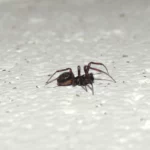 Steatoda borealis - Guess what? There's a spider called Steatoda borealis, and it's part of the comb-footed spider family. Some people call it a 'false widow spider' because of how it looks. But it's not the same as the real widow spiders.… Continue Reading >
Steatoda borealis - Guess what? There's a spider called Steatoda borealis, and it's part of the comb-footed spider family. Some people call it a 'false widow spider' because of how it looks. But it's not the same as the real widow spiders.… Continue Reading >
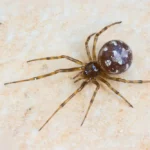 Triangulate Cobweb (Steatoda triangulosa) - Meet the triangulate cobweb spider from the Steatoda genus! Found in places like North America, New Zealand, and Europe, this little spider has a neat triangular pattern on its back.… Continue Reading >
Triangulate Cobweb (Steatoda triangulosa) - Meet the triangulate cobweb spider from the Steatoda genus! Found in places like North America, New Zealand, and Europe, this little spider has a neat triangular pattern on its back.… Continue Reading >
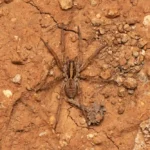 Hogna antelucana - The Hogna antelucana is a special kind of wolf spider found in the USA. People first noticed this spider in Austin, Texas. Like other wolf spiders, it has some cool looks and interesting ways of doing things.… Continue Reading >
Hogna antelucana - The Hogna antelucana is a special kind of wolf spider found in the USA. People first noticed this spider in Austin, Texas. Like other wolf spiders, it has some cool looks and interesting ways of doing things.… Continue Reading >
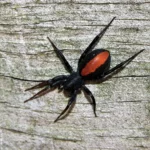 Red-spotted Ant Mimic (Castianeira descripta) - The red-spotted ant mimic spider is super clever! It walks on six legs and uses its front legs like ant antennas. This tricks the ants into thinking it's one of them.… Continue Reading >
Red-spotted Ant Mimic (Castianeira descripta) - The red-spotted ant mimic spider is super clever! It walks on six legs and uses its front legs like ant antennas. This tricks the ants into thinking it's one of them.… Continue Reading >